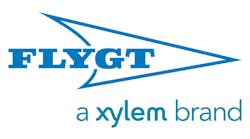Because of its low-lying location on the New Jersey side of the Hudson River, the city of Hoboken, New Jersey, has struggled for generations with flooding when extreme wet-weather events coincide with high tides. In 1998, the North Hudson Sewerage Authority (NHSA) purchased and took control of the sewer lines within the city. Since then, the NHSA has worked diligently to upgrade and modernize the city’s combined sewer collection system.
Scope
To improve both the safety and environmental compliance of the city’s century-old sewers, the NHSA built a wet-weather pumping station to alleviate street flooding during storm events in the H1 drainage area of southwest Hoboken. The project also included the construction of a screening chamber using mechanical bar screens to adhere to New Jersey Pollutant Discharge Elimination System (NJPDES) mandates requiring that no solids or floatables be discharged into the Hudson River.
In completing the project, consulting engineer CH2M Hill faced multiple complications presented by the age of the existing sewer system, the underground integration of a large pumping station into an urban transportation hub, rehabilitation of two century-old outfall pipes; and the need to accomplish these tasks within tight quarters immediately adjacent to an active New Jersey Transit rail terminal, which included two historic buildings.
Solution
For the stormwater pump station, CH2M Hill selected two high-performance propeller-style submersible pumps manufactured by Flygt, a Xylem brand. The pumps were supplied and placed into service by Pumping Services Inc., a Xylem representative in Middlesex, New Jersey.
The two Flygt propeller pumps, one of which is redundant, are installed 30 feet below ground, and each 350-horsepower pump can discharge 50 million gallons per day (MGD). The new pump station also has an emergency generator to ensure that it provides continuous service during rain events.
The slim profile of these pumps allows for a considerably smaller pump station footprint than that of non-submersible pumps, making them a perfect fit for this urban installation.
Flygt submersible propeller pumps operate directly in the pumped liquid and are easily installed and removed from the pump station because no fastening bolts are required. Because the pumps operate in and are submerged in the pumped liquid, they also run cooler. In addition, the pumps incorporate Flygt N-technology, designed to provide self-cleaning capabilities and sustained high efficiency.
On Oct. 29, 2012, the massive 100-year storm, Hurricane Sandy, made landfall in New Jersey, causing extensive power outages in Hoboken and surrounding communities. Throughout this tumultuous time—and despite the fact that water levels from Sandy far exceeded the capacity of the new station—the H1 Screening and Wet Weather Pump Station operated around the clock, without interruption.
Result
Today, two 50-MGD units at the Hoboken H1 Screening and Wet Weather Pump Station help prevent street flooding and, in compliance with NJPDES permitting requirements, ends the discharge of solid and floatable materials greater than a half inch in diameter to the Hudson River.
NHSA Executive Director Dr. Richard J. Wolff attested to the efficacy of the pumping station, saying, “The inundated streets in the southwest portion of the city were cleared of water within 48 hours, at least half the time that it would have taken without the wet-weather pumping station.”
Editor's Note: Scranton Gillette Communications and the SGC Water Group are not liable for the accuracy, efficacy and validity of the claims made in this piece. The views expressed in this content do not reflect the position of the editorial teams of Water & Wastes Digest, Water Quality Products and Storm Water Solutions.


